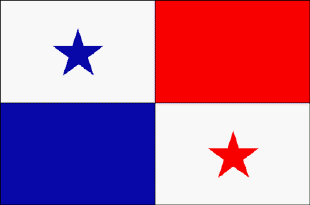
Panama
|
Panama History |
Click on map to see it in detail |
| Panama History |
Explored by Columbus in 1502 and by Balboa in 1513, Panama was the principal shipping point to and from South and Central America in colonial days. In 1821, when Central America revolted against Spain, Panama joined Colombia, which had already declared its independence. For the next 82 years, Panama attempted unsuccessfully to break away from Colombia. Between 1850 and 1900 Panama had 40 administrations, 50 riots, 5 attempted secessions, and 13 U.S. interventions. After a U.S. proposal for canal rights over the narrow isthmus was rejected by Colombia, Panama proclaimed its independence with U.S. backing in 1903. For canal rights in perpetuity, the U.S. paid Panama $10 million and agreed to pay $250,000 each year, which was increased to $430,000 in 1933, and to $1,930,000 in 1955. In exchange, the U.S. got the Canal Zone—a 10-mile-wide strip across the isthmus—and considerable influence in Panama's affairs. On Sept. 7, 1977, Gen. Omar Torrijos Herrera and President Jimmy Carter signed treaties giving Panama gradual control of the canal, phasing out U.S. military bases, and guaranteeing the canal's neutrality. Nicolas Ardito Barletta, Panama's first directly elected president in 16 years, was inaugurated on Oct. 11, 1984, for a five-year term. He was a puppet of strongman Gen. Manuel Noriega, a former CIA operative and head of the secret police. Noriega replaced Barletta with vice president Eric Arturo Delvalle a year later. In 1988, Noriega was indicted in the U.S. for drug trafficking, but when Delvalle attempted to fire him, Noriega forced the National Assembly to replace Delvalle with Manuel Solis Palma. In Dec. 1989, the assembly named Noriega "maximum leader" and declared the U.S. and Panama to be in a state of war. In Dec. 1989, 24,000 U.S. troops seized control of Panama City in an attempt to capture Noriega after a U.S. soldier was killed in Panama. On Jan. 3, 1990, Noriega surrendered himself to U.S. custody and was transported to Miami, where he was later convicted of drug trafficking. Guillermo Endara, who probably would have won an election suppressed earlier by Noriega, was installed as president. On Dec. 31, 1999, the U.S. formally handed over control of the Panama Canal to Panama. Meanwhile, Colombian rebels and paramilitary forces have made periodic incursions into Panamanian territory, raising security concerns. Panama has also faced increased drug and arms smuggling. In May 2004 presidential elections, Martín Torrijos, the son of former dictator Omar Torrijos, won 47.5% of the vote. He took office in September. |
| Origin of the name, Panama | There are several theories about the origin of the name Panama. Some believe that the country was named after a commonly found species of tree; others believe that the first settlers arrived in Panama in August, when butterflies abound, and that the name means "many butterflies" in indigenous tongue. The best known of these versions is that a village populated by fishermen originally bore the name PANAMÁ, after a beach nearby, and that this name meant "many fish". A Kuna chief has asserted that the name came from pannaba, a Kuna word for "very far". |
Click on each link below to learn more about the symbols.
|
||||
|
Panama consists of nine provinces: |
Provinces Panama is divided into 9 provinces (provincias) and 5 indigenous territories (comarcas), marked by a *:
|
|||
| Spanish is the official language. | ||||
| Panama's economy is based primarily on a well-developed services area that accounts for three-fourths of GDP. Services include the Panama Canal, banking, the Colon Free Zone, insurance, container ports, flagship registry, and tourism. A slump in Colon Free Zone and agricultural exports, high oil prices, and the withdrawal of US military forces held back economic growth in 2000. The government plans public works programs, tax reforms, and new regional trade agreements in order to stimulate growth |
|
Panama Links |
A trip through the Panama Canal |
Nature in Panama |
Source: Wikpedia the free Encyclopedia, InfoPlease.com, Government of Panama
Kim and Don Greene, Contributors; publication date February 2005